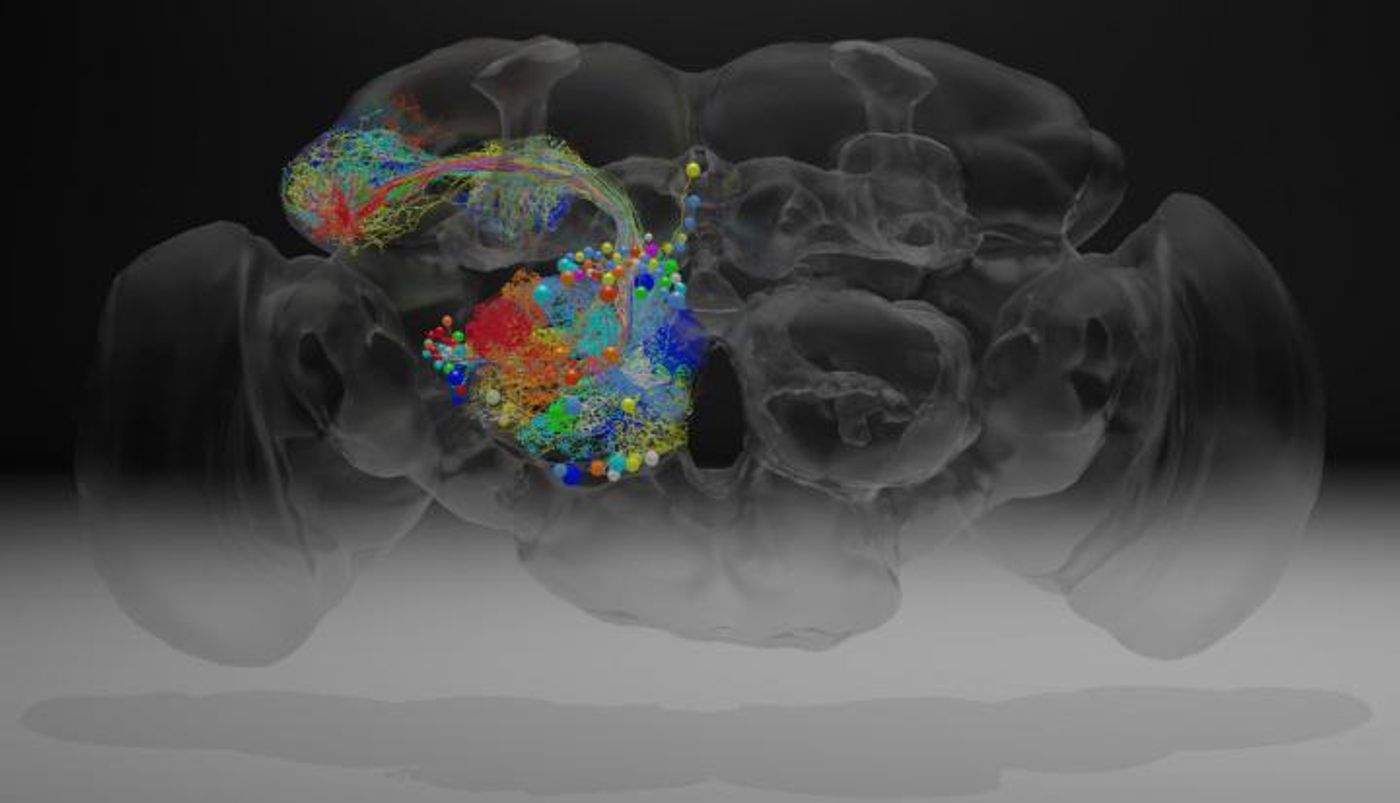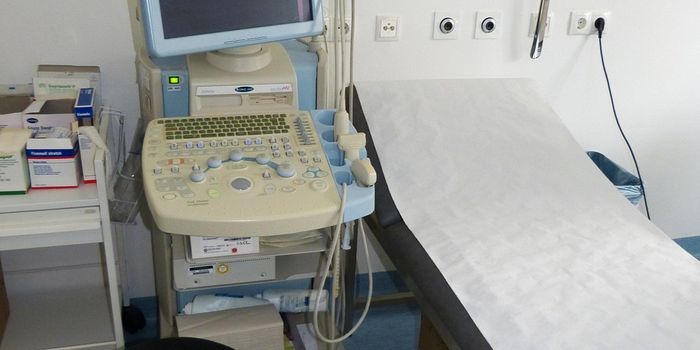A Complete View of the Fly Brain at Nanoscale Resolution
Researchers have completed a massive project to create a high-resolution map of the adult fruit fly brain. It took two powerful electron microscopes and 21 million pictures of over 7,000 slices of tissue. Now, every neuron in the Drosophila brain can be traced. The scientists, from the Howard Hughes Medical Institute's Janelia Research Campus in Ashburn, Virginia have reported their work in Cell and have made the dataset available here.
Fruit flies seem like nothing but annoying pests, but their brains are surprisingly sophisticated, said neuroscientist Davi Bock, a group leader at Janelia. "They can learn and remember. They know which places are safe and dangerous. They have elaborate sequences of courtship and grooming," he explained.
A fruit fly's brain has around 100,000 neurons, compared with about 100 billion in a person. Every neuron branches out like a starburst, meeting the branches of other neurons at connections called synapses, where critical signals are sent back and forth. Understanding the biology of neurons in the brain and how they connect is crucial to learning more about how the brain functions and the levels of detail this work provides will help advance that research.
"The entire fly brain has never been imaged before at this resolution that lets you see connections between neurons," said Bock. "Any time you look at images with higher resolution and more completeness, you're going to discover new things.”
To get this level of detail, the scientists had to improve on a technique called serial section transmission electron microscopy. After the brain is treated with various metals that creep into synapses, slices of the brain are exposed to an electron beam. The beam goes through everything, except the metals. "It's the same way that x-rays go through your body except where they hit bone," Bock explained. The team had to speed the process up dramatically, however.
That required the efforts of scientists from several institutions, but they came to image an entire brain slice in under seven minutes. They were also able to use a well-characterized portion of the fruit fly brain to confirm their findings.
The investigators identified a new kind of cell as well. Smell sense is transmitted through olfactory projection neurons, which signal to Kenyon cells. It was not known where those cells then send their information until this data revealed them. They also learned more about that region of the fly brain. That will help scientists learn more about fly behavior.
"We think it will tell us something about how the animal learns - how it associates odors with a reward or punishment," noted Bock.
The work is already being used by around twenty other groups. It will surely aid in our understanding of this common model organism. "It adds another tool to the toolkit we're using to understand this animal,” concluded Bock.
Sources: AAAS/Eurekalert! Via HHMI, Cell


![Master Lab Weighing: Accuracy, Compliance & Audits [eBook]](https://d3bkbkx82g74b8.cloudfront.net/eyJidWNrZXQiOiJsYWJyb290cy1pbWFnZXMiLCJrZXkiOiJjb250ZW50X2FydGljbGVfcHJvZmlsZV9pbWFnZV85MWRmZmRjMDIwNDBlMWJjMzYwN2ZiYWY2ZjI4ZGMzYzBmZGMwZGMyXzkxOTcucG5nIiwiZWRpdHMiOnsidG9Gb3JtYXQiOiJqcGciLCJyZXNpemUiOnsid2lkdGgiOjcwMCwiaGVpZ2h0IjozNTAsImZpdCI6ImNvdmVyIiwicG9zaXRpb24iOiJjZW50ZXIiLCJiYWNrZ3JvdW5kIjoiI2ZmZiJ9LCJmbGF0dGVuIjp7ImJhY2tncm91bmQiOiIjZmZmIn19fQ==)






